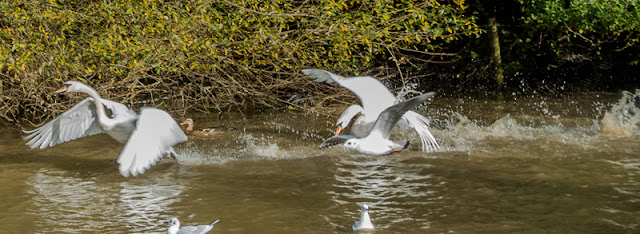It snowed yesterday afternoon and evening, then froze overnight. The gradual thaw started as soon as the winter sun appeared above the rooftops . . . weak, low in the sky, rising a long way round to the south-east so close now to the solstice. I should have gone out then, but it was too cold, both for my fingers and for the camera battery. By the time I ventured out after lunch, it was dripping under the trees, soggy underfoot, but there was still ice on the lake.
Midwinter
spring is its own season
Sempiternal though sodden towards
sundown,
Suspended in time, between pole and tropic.
When the
short day is brightest, with frost and fire,
The brief sun flames
the ice, on pond and ditches,
In windless cold that is the heart's
heat,
Reflecting in a watery mirror
A glare that is blindness
in the early afternoon.
T S Eliot, 'Little Gidding', from Four Quartets, 1941
























